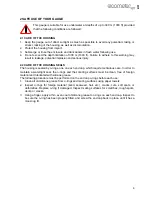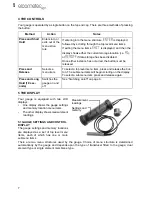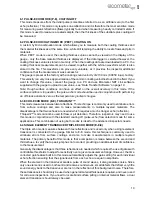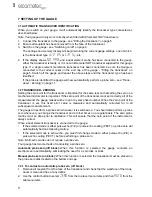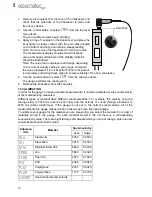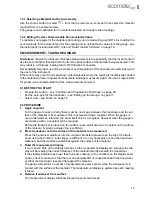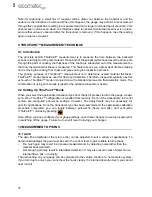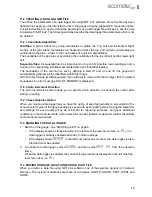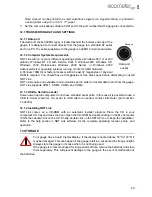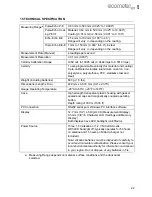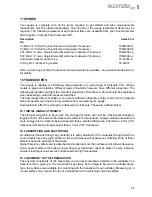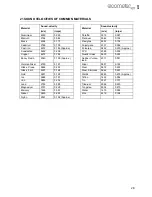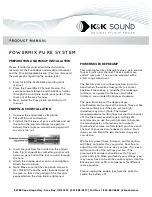
14
en
7.4.1 Selecting a Material and Sound-velocity
Use the control button to select
MTL
from the top level menu items and then select the material
required from the submenu items.
The gauge is now calibrated for the material selected and ready to take readings.
7.4.2 Editing the User Customisable Sound-velocity Value
To calibrate your gauge for the material and coating you are measuring, use NDT Link to define the
sound-velocity for the material and for the coating and to upload these values into the gauge - see
the instructions included with NDT Link and “Data Transfer Software” on page 19.
8 MEASUREMENT - TAKING READINGS
Disclaimer:
Inherent in ultrasonic thickness measurement is the possibility that the instrument will
use the second rather than the first echo from the back surface of the material being measured. This
may result in a thickness reading that is TWICE what it should be.
Responsibility for proper use of the instrument and recognition of this phenomenon rests solely with
the user of the instrument.
Other errors may occur from measuring coated materials where the coating is insufficiently bonded
to the material surface. Irregular and inaccurate readings may result. Again, the user is responsible
for proper use and interpretation of the measurements acquired.
8.1 BEFORE YOU START
•
Prepare the surface - see “Condition and Preparation of Surfaces” on page 26.
•
Set the zero point of the transducer - see “Setting up the Gauge” on page 11.
•
Select units - see “Units” on page 16
8.2 PROCEDURE
1.
Apply couplant
For the gauge to work correctly there must be no air gap between the transducer and the sur-
face of the material to be measured. This is achieved using a couplant. When the gauge is
used underwater as intended, the water itself acts as a couplant. However when the gauge is
used above water, a couplant will be required.
Before the transducer is placed on the surface, put a small amount of couplant on the surface
of the material. Typically a single drop is sufficient.
2.
Place transducer onto the surface of the material to be measured
Press the transducer wearface into the couplant. Moderate pressure on the top of the trans-
ducer using the thumb or index finger is sufficient; it is only necessary to keep the transducer
stationary and the wearface seated flat against the surface of the material.
3.
Read the measurement display
If six or seven bars of the stability indicator on the measurement display are showing, the dis-
play will be reading the correct thickness of the material directly beneath the transducer.
If the stability indicator has fewer than five bars showing, or the numbers on the display seem
erratic, check to make sure that there is an adequate film of couplant beneath the transducer,
and that the transducer is seated flat against the material.
The gauge will perform a number of measurements every second when the transducer is in
contact with the surface of the material. The measurement display is updated as each reading
is taken.
4.
Remove transducer from surface
The measurement display will show the last measurement made.





